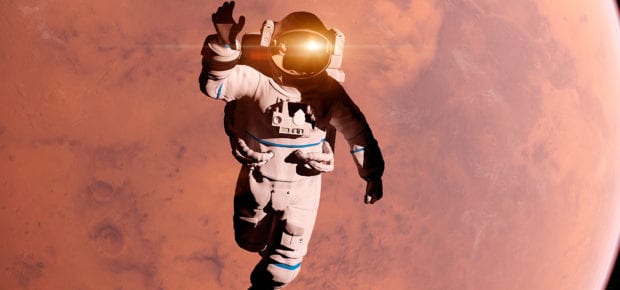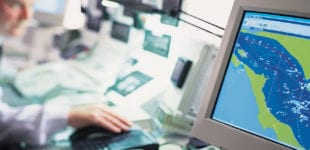August 16, 2019
In the first installment of this series, we looked at the impact of some famous projects — Apollo, Voyager and Project Diana — that shaped technology for decades to come.
In this piece, we’re looking at some current-day missions that are pushing engineering boundaries, resulting either in new technologies or new applications of existing ones.
Toughening Up Force Sensors
As questions of Mars’ potential to sustain life continue to grow, NASA’s Jet Propulsion Laboratory is preparing the next Mars rover.
The Mars 2020 rover will boast a number of significant improvements over previous rovers (like Sojourner, Spirit, Opportunity and Curiosity), the primary one being its robotic arm, which was recently detailed by IEEE Spectrum. The arm is responsible for taking surface samples of rock and soil, which could be crucial in building our understanding of the environment.
While many aspects of the arm are achievements in themselves, one specific development has been an improved force sensor.
Matt Robinson is an engineer on the project who spoke with IEEE Spectrum: “When you’re talking about actually acquiring samples, it’s not a matter of just placing the tool—you also have to apply forces to the environment. And once you start doing that, you really need a force sensor to protect you, and also to determine how much load to apply.
“On Mars, we’re talking about an environment where the temperature can vary 100 degrees Celsius over the course of the day, so it’s very challenging thermally. With force sensing for instance, that’s a major problem. Force sensors aren’t typically designed to operate or even survive in temperature ranges that we’re talking about. So a lot of effort has to go into force sensor design and testing.”
These robust force sensors could find their way into other, new applications that involve extreme environments, like power plants.
Guidance System in a Box
If a concerted effort were made to establish a more consistent human presence on the moon, there would be a number of technical challenges still to sort out.
One of them is our ability to precisely land on the lunar surface — Apollo 11 overshot its landing rather significantly, and there’s no compass or GPS for the moon to make it easy now, either. That means landers will need to carry all the sensors and computers they need to land safely.
A Pittsburgh-based startup is up to the challenge … Their product is a “brick-size unit” that can be attached to any spacecraft, allowing it to land within 100 meters of its target.
The innovation here involves applying learnings from facial detection algorithms. IEEE Spectrum describes it like this: “The sensor will take a several-megapixel image of the lunar surface every second or so as the lander approaches. Algorithms akin to those for facial recognition will spot unique features in the images, comparing them with stored maps to calculate lunar coordinates and orientation.”
Channeled Cooling
Technologists can also produce great results by implementing existing technologies into never-before-seen applications.
Researchers from the Johns Hopkins University Applied Physics Laboratory launched a solar probe last August that’s getting closer to the sun than any probe before. The previous record was set in 1976, at 43 million km – the Parker Solar Probe, by contrast, is only 6 million km away from it.
To withstand the extreme UV rays at that proximity, the team mounted the solar panels to titanium sheets with narrow channels that carry cooling water.
In the article, four of the engineers who worked on the project describe it this way: “It’s not unlike the system used to keep the engine in your car from overheating. The cooling system on the Parker probe doesn’t use antifreeze, though. It uses ordinary deionized water, just as you might use in a steam iron. And just like the cooling system in your car, the system is pressurized to prevent the cooling fluid from boiling at high temperatures.”
Drawing inspiration from these existing technologies is, in turn, allowing us to get measurements we’ve never had before about the sun’s coronal heating.
For more about the overlap between technologies and the effect they’ve had on our exploration of space and Earth alike, visit our special feature Space Exploration, Technology and Our Lives.





 Liquid Infrastructure: Our Planet's Most Precious Resource
Liquid Infrastructure: Our Planet's Most Precious Resource The Impact of Technology in 2025
The Impact of Technology in 2025 Quantum and AI: Safeguards or Threats to Cybersecurity?
Quantum and AI: Safeguards or Threats to Cybersecurity? Why AI Can't Live Without Us
Why AI Can't Live Without Us Bits, Bytes, Buildings and Bridges: Digital-Driven Infrastructure
Bits, Bytes, Buildings and Bridges: Digital-Driven Infrastructure Impact of Technology in 2024
Impact of Technology in 2024 Emerging AI Cybersecurity Challenges and Solutions
Emerging AI Cybersecurity Challenges and Solutions The Skies are Unlimited
The Skies are Unlimited Smart Cities 2030: How Tech is Reshaping Urbanscapes
Smart Cities 2030: How Tech is Reshaping Urbanscapes Impact of Technology 2023
Impact of Technology 2023 Cybersecurity for Life-Changing Innovations
Cybersecurity for Life-Changing Innovations Smarter Wearables Healthier Life
Smarter Wearables Healthier Life Infrastructure In Motion
Infrastructure In Motion The Impact of Tech in 2022 and Beyond
The Impact of Tech in 2022 and Beyond Cybersecurity, Technology and Protecting Our World
Cybersecurity, Technology and Protecting Our World How Technology Helps us Understand Our Health and Wellness
How Technology Helps us Understand Our Health and Wellness The Resilience of Humanity
The Resilience of Humanity Harnessing and Sustaining our Natural Resources
Harnessing and Sustaining our Natural Resources Creating Healthy Spaces Through Technology
Creating Healthy Spaces Through Technology Exceptional Infrastructure Challenges, Technology and Humanity
Exceptional Infrastructure Challenges, Technology and Humanity The Global Impact of IEEE's 802 Standards
The Global Impact of IEEE's 802 Standards Scenes of our Cyber Lives: The Security Threats and Technology Solutions Protecting Us
Scenes of our Cyber Lives: The Security Threats and Technology Solutions Protecting Us How Millennial Parents are Embracing Health and Wellness Technologies for Their Generation Alpha Kids
How Millennial Parents are Embracing Health and Wellness Technologies for Their Generation Alpha Kids Space Exploration, Technology and Our Lives
Space Exploration, Technology and Our Lives Global Innovation and the Environment
Global Innovation and the Environment How Technology, Privacy and Security are Changing Each Other (And Us)
How Technology, Privacy and Security are Changing Each Other (And Us) Find us in booth 31506, LVCC South Hall 3 and experience the Technology Moon Walk
Find us in booth 31506, LVCC South Hall 3 and experience the Technology Moon Walk Virtual and Mixed Reality
Virtual and Mixed Reality How Robots are Improving our Health
How Robots are Improving our Health IEEE Experts and the Robots They are Teaching
IEEE Experts and the Robots They are Teaching See how millennial parents around the world see AI impacting the lives of their tech-infused offspring
See how millennial parents around the world see AI impacting the lives of their tech-infused offspring Take the journey from farm to table and learn how IoT will help us reach the rising demand for food production
Take the journey from farm to table and learn how IoT will help us reach the rising demand for food production Watch technical experts discuss the latest cyber threats
Watch technical experts discuss the latest cyber threats Explore how researchers, teachers, explorers, healthcare and medical professionals use immersive technologies
Explore how researchers, teachers, explorers, healthcare and medical professionals use immersive technologies Follow the timeline to see how Generation AI will be impacted by technology
Follow the timeline to see how Generation AI will be impacted by technology Learn how your IoT data can be used by experiencing a day in a connected life
Learn how your IoT data can be used by experiencing a day in a connected life Listen to technical experts discuss the biggest security threats today
Listen to technical experts discuss the biggest security threats today See how tech has influenced and evolved with the Games
See how tech has influenced and evolved with the Games Enter our virtual home to explore the IoT (Internet of Things) technologies
Enter our virtual home to explore the IoT (Internet of Things) technologies Explore an interactive map showcasing exciting innovations in robotics
Explore an interactive map showcasing exciting innovations in robotics Interactively explore A.I. in recent Hollywood movies
Interactively explore A.I. in recent Hollywood movies Get immersed in technologies that will improve patients' lives
Get immersed in technologies that will improve patients' lives